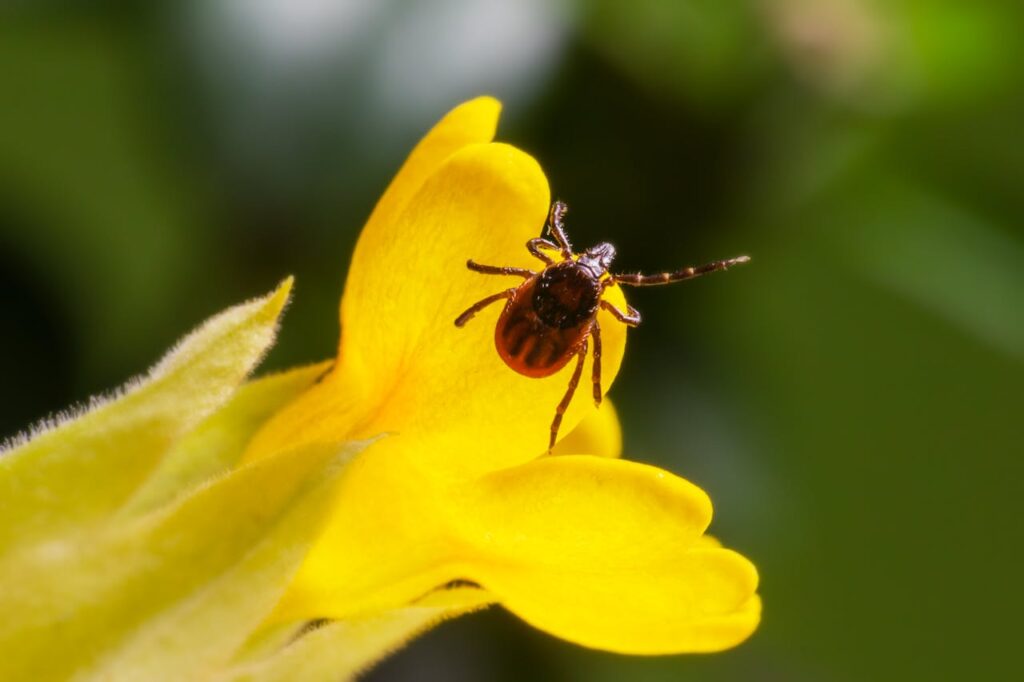With spring, walks get longer, and parks fill up with new smells, but your dog’s archenemy also returns the tick. Here’s How to remove ticks from a dog!
Table of Contents
You may be interested in: Why do dogs eat poop?

With spring, ticks return
The arrival of summer brings with it many things that your dog was anxiously waiting for. The days get longer and with them, the walks, and the parks are filled with flowers and interesting smells, and running in the meadows is even more fun. But there is also something that neither you nor your dog missed: the tick!
Read Also: Can dogs eat plantains? Are plantains good for dogs?
These parasites lurk on plants and twigs and then drop onto your dog and grab onto his furry coat with a bite. Thanks to the rostrum – the mouth of the tick– they manage to penetrate the skin and start sucking blood. Your puppy does not notice anything at the moment, because the bite of this parasite is not painful, but it subsequently suffers the effects: from the painful itch to the risk of being infected by diseases that the tick carries on each of its prey.
After every walk or when you take a bath, therefore, it is better to check your dog carefully: the areas of the body that ticks prefer are the groin, armpits, head, and chest. If your dog has been infested with these parasites, here’s how to recognize and eliminate them!

How to recognize dog ticks
Ready to inspect your dog for ticks?
As we have mentioned, ticks, especially adults, prefer areas of the body where a particularly thin skin allows them to feed more easily and where, moreover, it is more difficult for the dog to scratch. So, now that you know where to look, let’s see how what you’re looking for is done!
Ticks can range from about a millimeter to as large as a centimeter, depending on the species, stage of development, or how much blood they have “eaten.” The only visible division between the head and body is that between the “mouth”. which fits firmly under the dog’s skin, and the “abdomen”, on the sides of which there are 4 pairs of legs. Here is an identikit of their characteristic appearance: ovoid and flattened body, eight legs, greyish color (female tick ) or brown-reddish (male tick).
Surely the ticks are not particularly cute animals, so why do we dwell so much on their physical description? If your dog has been bitten by a tick or is even haunted, you will need to be able to recognize the parasite immediately, and knowing how it is done will help you eliminate it without errors!
Dog ticks: Symptoms
Inspection aside, you can tell if your dog has a tick from the symptoms it shows. The parasite does not just suck blood but transmits to the host animal the toxins of its saliva. Which, with their anticoagulant and analgesic action, progressively weaken your dog’s immune system, causing a series of symptoms especially the skin tissue and the digestive system.
In the area directly affected by the tick bite you will notice the presence of a small erythema and a visible redness: this manifestation will cause your dog intense and constant itching. So if you see your puppy scratching persistently, especially behind the ears or on the neck. The cause is most likely a tick and you should proceed with a thorough inspection immediately.
Now that you have located it, you are ready to remove the tick!

How to remove ticks from a dog
Once you’ve groped your furry friend’s body to spot the parasite, you’re ready to get a tick off your dog!
Once you have identified the exact location of the parasite, get some tweezers with fine tips and grab the tick from the mouth – then from the part closest to your dog’s body – and pull it gently upwards while making a small rotation: this movement will prevent his body from breaking, leaving the rostrum stuck in the skin and causing inflammation to worsen. You can help yourself with a drop of pesticide if this is more difficult than expected. Throughout the procedure, protect your hands with a pair of gloves to avoid direct contact with the parasite.

After removing the tick, check the area carefully to make sure there is no residue left. If you notice, by sight or by touch, the presence of a black dot, it could be the rostrum that has remained attached to the skin. In this case, you will have to eliminate it using a sterile needle and again helping yourself with tweezers if necessary. This last attention is fundamental: if only a small part of the tick remains under the skin it can cause dangerous infections. After removing the tick, remember to disinfect your dog’s skin well and that’s it: you have eliminated the parasite!
If your dog has a lot of ticks, However. It is better not to act alone: take him immediately to the vet who will help you with specific products.
